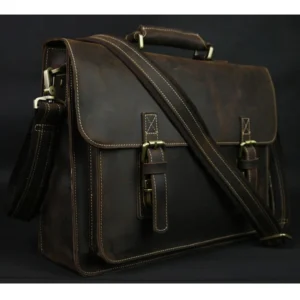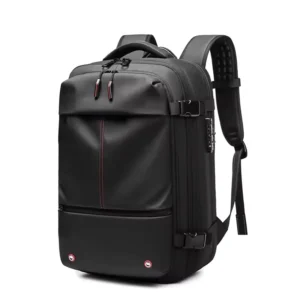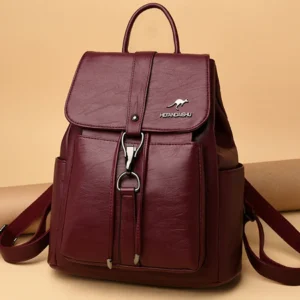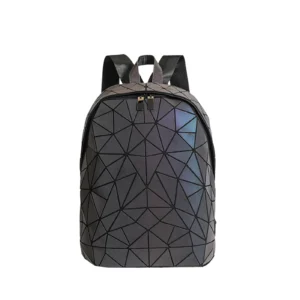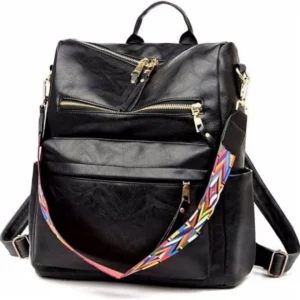Understanding the Difference Between Leather Briefpacks and Traditional Backpacks
When it comes to carrying your daily essentials, the bag you choose speaks volumes about your style and practical needs. Leather briefpacks and traditional backpacks represent two distinct approaches to personal carrying solutions, each with unique benefits and design philosophies.
A leather briefpack is a sophisticated hybrid that combines the professional appeal of a briefcase with the comfort and convenience of a backpack. These versatile bags typically feature premium materials and thoughtful organization designed for business environments.
Traditional backpacks, on the other hand, are the familiar two-strap carriers we’ve used since school days. They’ve evolved from simple book bags into diverse carrying solutions for everything from daily commutes to wilderness adventures.
In this guide, we’ll explore:
* The defining characteristics of each bag type
* Material differences and their practical implications
* Organization and comfort considerations
* Which situations call for each bag style
* How to make the right choice for your lifestyle
Understanding these differences matters whether you’re a corporate professional, creative freelancer, student, or traveler. Your bag is both a practical tool and a style statement that accompanies you daily.
The bag market reflects our diverse needs – with approximately 40% of professionals preferring more structured bags for work settings, while casual and outdoor users typically prioritize comfort and capacity over formal appearance.
Before diving into specifics, it’s worth considering how premium leather backpacks for professionals differ from everyday options, and how these differences might impact your carrying experience. Similarly, exploring available hybrid briefcase backpacks can provide context for the versatility these designs offer.
What Exactly Is a Leather Briefpack?
A leather briefpack represents the thoughtful evolution of business bags to meet modern professional needs. This hybrid design merges the structured elegance of a traditional briefcase with the ergonomic comfort and hands-free convenience of a backpack.
The briefpack emerged as professionals sought carrying solutions that could transition seamlessly between different environments and carrying needs. Unlike purely casual bags, briefpacks maintain a professional aesthetic while offering multiple ways to carry your essentials.
Key features that define a true leather briefpack include:
- Multiple carrying options (backpack straps, top handles, sometimes shoulder straps)
- Professional-grade organization with dedicated laptop compartments
- Document sleeves and business card holders
- Premium leather construction (typically full-grain or top-grain)
- Structured design that maintains its shape when set down
- Clean, minimalist styling appropriate for business settings
The materials used in quality briefpacks significantly impact their performance and longevity. Full-grain leather, considered the highest quality, retains the natural surface of the hide with all its unique character. Top-grain leather, slightly more uniform in appearance, offers excellent durability with a more consistent look.
A typical leather briefpack weighs between 2-4 pounds empty and features dimensions suitable for carrying laptops up to 15-17 inches, along with documents, electronics, and daily essentials. The structured organization inside keeps everything accessible and protected.
The versatility of executive leather backpacks for work environments makes them particularly valuable for professionals who need to maintain a polished appearance while carrying technology and documents. The growing selection of leather work backpacks reflects the increasing demand for professional carrying solutions that balance form and function.
Traditional Backpacks Explained
Traditional backpacks represent the most familiar and versatile carrying solution used across countless activities and lifestyles. These two-strapped carriers have evolved dramatically from their humble beginnings as simple knapsacks.
The modern backpack traces its development from basic military rucksacks to specialized designs for specific activities. Today’s traditional backpacks span a remarkable range of styles—from minimalist daypacks to feature-rich travel systems, technical hiking equipment, and campus-ready book bags.
Most traditional backpacks share these defining characteristics:
- Two shoulder straps for balanced weight distribution
- One main compartment with varying degrees of additional organization
- Casual or technical appearance depending on intended use
- Lightweight synthetic materials (typically nylon, polyester, or cordura)
- Emphasis on accessibility and capacity
The materials used in traditional backpacks prioritize durability, weather resistance, and lightweight performance. Common fabrics include:
* Ripstop nylon (lightweight with tear resistance)
* Ballistic nylon (extremely durable but heavier)
* Polyester (affordable and colorfast)
* Cordura (exceptional abrasion resistance)
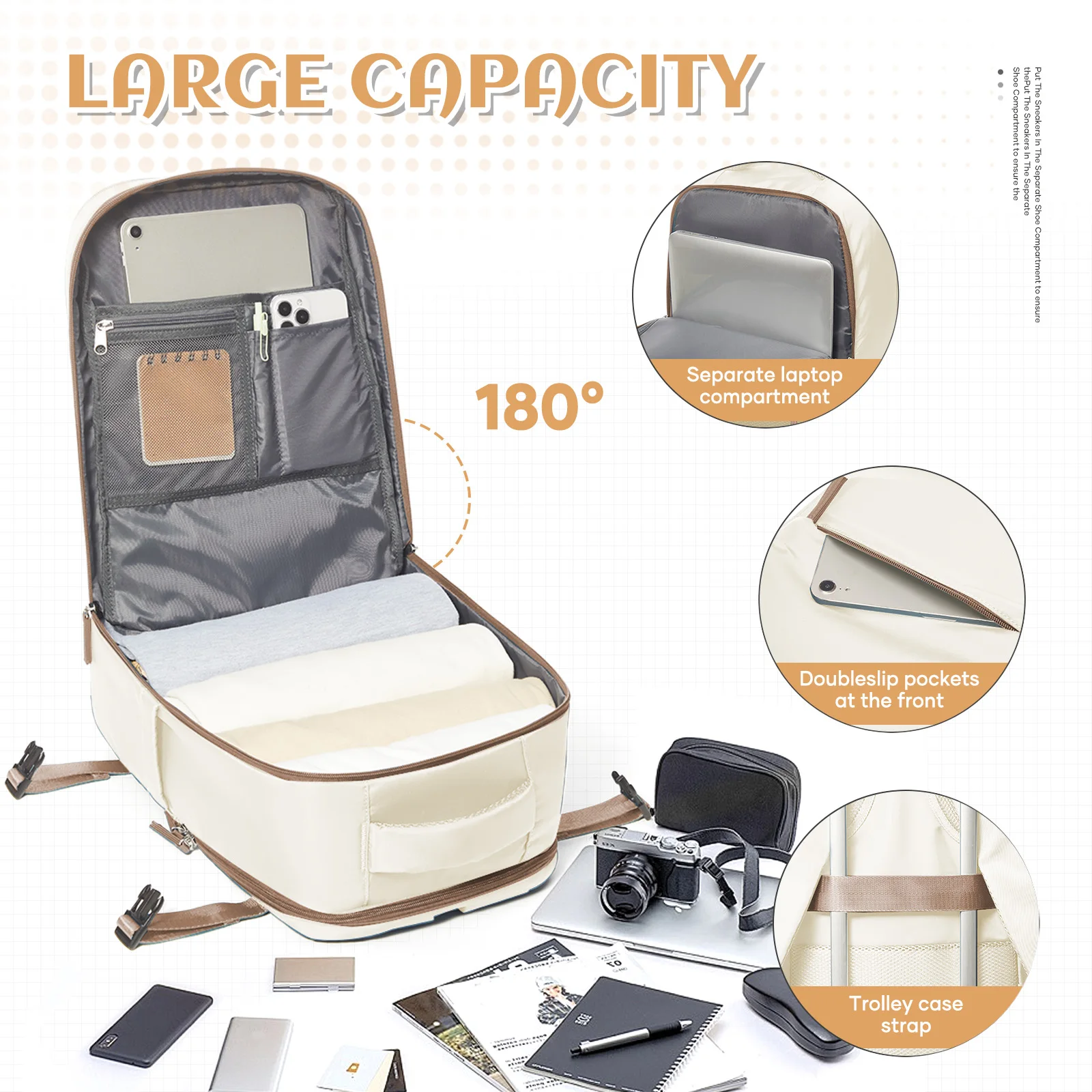
Most traditional backpacks weigh between 1-3 pounds empty and feature varying organizational schemes. Simpler designs might offer just a main compartment and front pocket, while more complex models include laptop sleeves, organizer panels, water bottle pockets, and specialized attachments.
The traditional backpack’s versatility has made it ubiquitous across demographics and uses. For many professionals, men’s leather laptop backpacks offer a bridge between casual backpack convenience and workplace appropriateness, bringing traditional backpack comfort into professional contexts.
Professional Aesthetics vs. Versatile Functionality
The visual impact of your bag makes an immediate statement about your personal style and professional identity. The contrast between leather briefpacks and traditional backpacks is perhaps most evident in their aesthetic presentation.
Leather briefpacks project a refined, intentional image. Their clean lines, structured silhouettes, and premium materials communicate attention to detail and professional consideration. The warm, natural tones of leather create a sophisticated presence that complements business attire and elevates casual outfits.
Traditional backpacks emphasize practical versatility with a more casual appearance. Their softer structures, technical materials, and often more colorful designs project an approachable, active image. While many contemporary backpacks feature sleek, minimalist designs, they generally retain a more casual visual identity.
The material differences dramatically affect how each bag ages. Quality leather develops a rich patina over time, with each scratch and mark telling the story of your journeys. This natural aging process enhances the material’s character and often increases its visual appeal. In contrast, synthetic materials typically show wear without the romanticized patina—scuffs and abrasions generally detract rather than enhance.
Color options differ significantly between these bag categories. Leather briefpacks typically feature natural leather tones (browns, tans, blacks) with limited color treatments to preserve the material’s natural beauty. Traditional backpacks offer virtually unlimited color options, from subtle blacks and grays to vibrant patterns and prints.
First impressions matter in different contexts. In formal business environments, a leather briefpack complements professional attire and signals attention to quality. For casual settings, outdoor adventures, or student life, the traditional backpack’s practical design and informal aesthetic often feel more appropriate.
Learning how to style a leather work backpack for different occasions can help maximize versatility, while understanding the qualities of full-grain leather backpacks provides insight into how these professional bags develop character over time.
Comparing Materials: Leather Quality vs. Synthetic Performance
The materials used in briefpacks and traditional backpacks fundamentally shape their performance, durability, maintenance requirements, and overall user experience.
Leather Quality in Briefpacks
Premium briefpacks typically feature:
* Full-grain leather: The highest quality leather that includes the entire top layer of the hide with all natural grain patterns. It’s the strongest, most durable option that develops a beautiful patina over time.
* Top-grain leather: The second-highest quality, created by sanding away imperfections from full-grain leather. Slightly less character but still excellent durability.
These natural materials offer distinct advantages:
* Exceptional durability when properly maintained
* Natural beauty that improves with age
* Tear resistance and structural integrity
* Distinctive tactile experience and aroma
* Potential to last decades with proper care
Synthetic Materials in Traditional Backpacks
Modern backpacks commonly use:
* Nylon (often ripstop or ballistic): Lightweight with excellent strength-to-weight ratio
* Polyester: Affordable, colorfast, and moderately durable
* Cordura: Exceptional abrasion resistance for technical applications
These engineered materials provide:
* Consistent performance in various conditions
* Excellent water resistance (often with additional coatings)
* Lightweight construction
* Easy cleaning and maintenance
* Lower cost relative to premium leather
Weather Resistance Comparison
Traditional backpacks generally offer superior immediate water resistance through synthetic materials and specialized coatings. Many feature water-resistant zippers and sealed seams for additional protection.
Leather requires more care in wet conditions. Quality leather briefpacks often include some water resistance, but leather’s natural properties make it susceptible to water damage without proper treatment. Regular application of leather protectors significantly improves weather resistance.
Maintenance Requirements
Leather briefpacks require more intentional maintenance:
* Regular conditioning (typically every 3-6 months)
* Cleaning with appropriate leather products
* Storage considerations to maintain shape
* Protection from extended sun exposure
* Occasional professional treatment for serious issues
Traditional backpacks generally need less maintenance:
* Machine or spot washing as needed
* Quick-drying properties
* Few special storage requirements
* Greater tolerance for harsh conditions
Understanding material quality in professional backpacks helps explain why well-crafted leather options command premium prices. For those seeking the ultimate in quality, exploring luxury leather backpacks provides insight into how exceptional materials translate to superior performance.
Organization and Storage: Business Precision vs. Casual Versatility
How a bag organizes your belongings significantly impacts your daily efficiency and item accessibility. Leather briefpacks and traditional backpacks take distinctly different approaches to internal organization.
Leather Briefpack Organization
Briefpacks typically feature business-oriented organization:
* Padded laptop compartment with secure closure
* Document sleeves or dividers for papers and folders
* Dedicated tablet pocket separated from larger items
* Business card holders and pen loops
* Strategically placed quick-access pockets for phones and essentials
* Zippered security pockets for valuables
* Cable management solutions or power bank pockets
This organizational structure prioritizes protection of technology and business materials, quick access to frequently used items, and maintaining the integrity of important documents. The structured design helps items remain in place and prevents crushing of delicate contents.
Traditional Backpack Organization
Traditional backpacks offer more varied organizational approaches depending on their intended use:
* Simpler designs with large main compartments for flexibility
* Front pockets or stash pouches for quick access
* Side water bottle pockets
* External attachment points for gear (on technical packs)
* Sometimes laptop sleeves, though often less padded than briefpacks
* Organizational panels in some models, particularly for students or commuters
This design philosophy emphasizes adaptability over specialization. The larger open spaces accommodate bulkier items or varying loads, while simpler organization keeps weight down and maximizes capacity.
Practical Differences in Daily Use
The laptop storage in briefpacks typically provides superior protection with padded compartments that suspend the device away from the bottom of the bag. Traditional backpacks might include laptop sleeves, but often with less comprehensive protection.
Document organization shows even greater contrast. Briefpacks include sleeves and dividers specifically designed to keep papers crisp and organized. Traditional backpacks rarely include dedicated document protection, making them less ideal for transporting important papers.
Small item organization in briefpacks tends to be more detailed and accessible, with dedicated spaces for business essentials like pens, cards, and small electronics. Traditional backpacks might include some organization but typically with fewer specialized pockets.
Knowing how to master office backpack organization can help maximize productivity regardless of which style you choose. Understanding what daily carry essentials professionals need helps explain why specialized organization makes sense for business-oriented bags.
Comfort and Ergonomics: How They Feel During Daily Use
The physical comfort of carrying your bag significantly impacts your daily experience, particularly during longer commutes or travel days.
Weight Distribution
Traditional backpacks excel in distributing weight evenly across both shoulders and against the back. Their design has been refined specifically for comfortable carrying, with features often including:
* Contoured shoulder straps that follow body curves
* Sternum straps to stabilize heavy loads
* Padded back panels with airflow channels
* Hip belts on larger models to transfer weight to stronger hip muscles
* Load lifter straps on technical packs for optimal weight positioning
These features make traditional backpacks the clear winner for heavy loads or extended carrying periods, explaining their popularity for hiking, travel, and student use.
Leather briefpacks offer reasonable comfort through padded shoulder straps and back panels, but their hybrid design represents a compromise. The briefcase functionality sometimes limits the ergonomic optimization possible. However, quality briefpacks do offer:
* Padded, adjustable shoulder straps
* Some back panel padding
* The option to switch carrying methods when one becomes uncomfortable
* Generally lighter loads due to business-oriented use
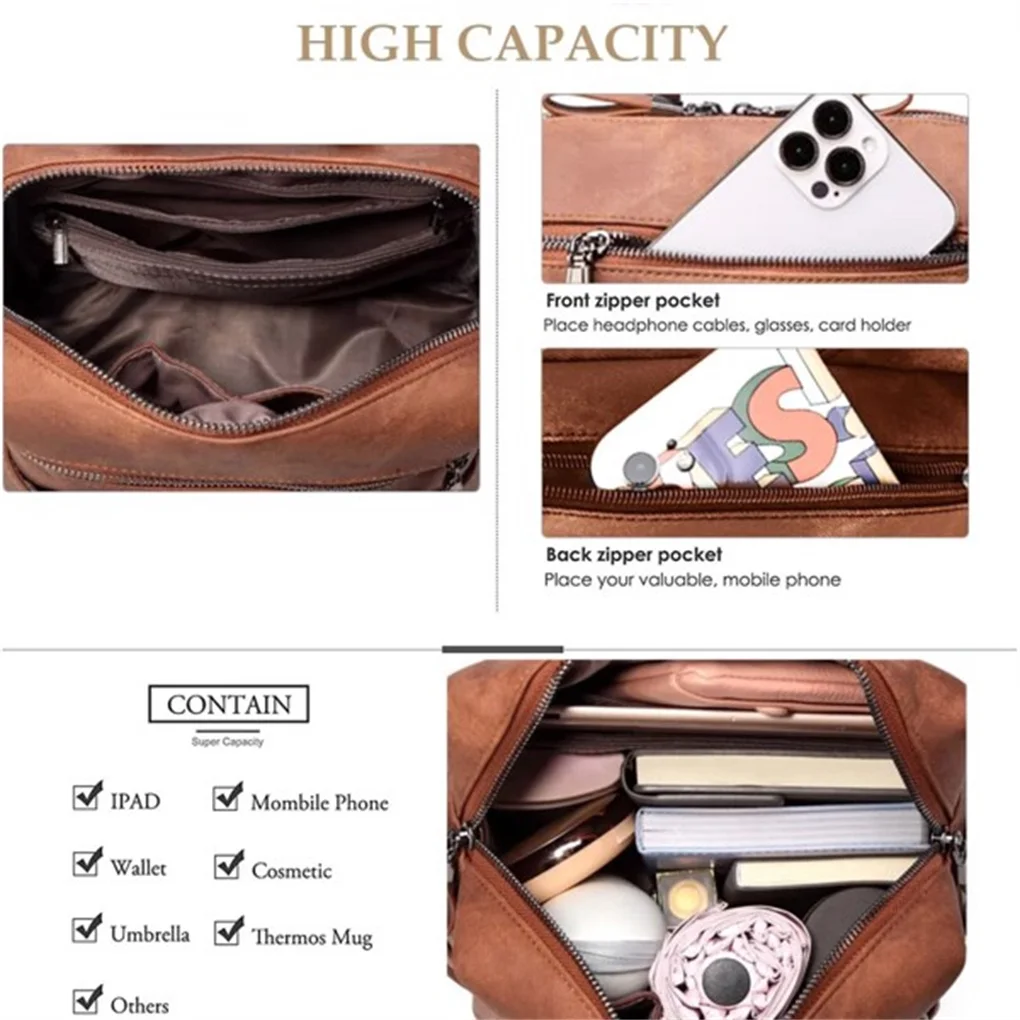
Impact of Materials on Comfort
The materials themselves affect comfort in several ways:
* Leather briefpacks tend to be heavier when empty, starting your carry with added weight
* Traditional backpacks use lightweight materials that minimize empty weight
* Leather can feel stiffer initially but molds to your body over time
* Technical synthetic materials offer immediate flexibility and often better breathability
Airflow and Heat Management
Traditional backpacks, particularly those designed for active use, often incorporate mesh panels and ventilation channels to reduce back sweat and improve comfort in warm conditions.
Leather briefpacks typically offer less ventilation due to their material properties and professional design aesthetic. The solid back panels provide structure but can increase heat buildup during extended wear or in warm weather.
Practical Considerations: Versatility, Durability, and Maintenance
Beyond aesthetics and organization, practical factors like versatility, durability, and maintenance requirements significantly influence which bag best suits your lifestyle.
Versatility Across Environments
Leather briefpacks excel in professional versatility, offering:
* Multiple carrying options to suit different situations
* Professional appearance appropriate for business meetings
* Sufficient organization for work essentials
* Capacity for daily technology and documents
However, they show limitations in:
* Outdoor recreational settings
* Situations requiring large cargo capacity
* Activities where the bag might face rough treatment
* Environments with extended exposure to moisture
Traditional backpacks demonstrate versatility through:
* Adaptability to casual, active, and sometimes professional settings
* Capacity that adjusts to varying loads
* Comfort during extended physical activity
* Better performance in adverse weather conditions
Long-term Durability Expectations
Quality leather briefpacks can last decades with proper care. The natural durability of premium leather allows it to withstand years of use while developing character through its patina. Stress points are typically reinforced with stitching or rivets, and quality hardware ensures consistent performance.
Traditional backpacks vary widely in durability based on materials and construction quality. High-end technical packs might offer exceptional longevity, while budget options may show wear within a year of regular use. Synthetic materials resist staining and moisture damage but may suffer from abrasion, UV degradation, or stress tears.
Maintenance Requirements in Practice
The practical reality of maintenance differs significantly between these bag types:
Leather briefpack maintenance includes:
* Wiping with a damp cloth to remove dust and light dirt
* Applying leather conditioner several times yearly
* Treating stains promptly with appropriate leather cleaners
* Storing properly to maintain shape when not in use
* Occasional professional treatment for serious issues
Traditional backpack maintenance typically involves:
* Machine washing (for many models) or spot cleaning
* Allowing thorough drying before storage
* Occasionally reproofing water-resistant coatings
* Simple repairs like replacing zipper pulls or patching small tears
The question of whether full-grain leather makes better backpacks often comes down to these maintenance considerations—while leather requires more care, the potential longevity and aging characteristics can make this investment worthwhile for many users.
Investment Value: Analyzing Price vs. Longevity
The financial aspect of choosing between a leather briefpack and a traditional backpack extends beyond the initial purchase price to consider long-term value and cost per use.
Initial Investment Comparison
Quality leather briefpacks typically range from $200 to $500+, with premium handcrafted options from specialized workshops exceeding $1,000. This higher entry point reflects the cost of quality leather, craftsmanship, and hardware.
Traditional backpacks offer a broader price spectrum:
* Budget options: $30-80
* Mid-range quality: $80-200
* Premium technical or designer backpacks: $200-400+
Long-term Value Assessment
The value equation changes dramatically when considering longevity:
A quality leather briefpack costing $350 that lasts 10+ years represents an annual cost of approximately $35 per year of use. With proper care, many premium leather goods last significantly longer, potentially reducing this annual cost further.
A traditional backpack costing $100 might need replacement every 2-4 years with regular use, representing $25-50 per year. Budget options might require even more frequent replacement, potentially costing more over time despite lower initial prices.
Repair vs. Replace
Leather briefpacks offer superior repairability:
* Quality leather can be restored and reconditioned
* Hardware can be replaced when worn
* Stitching can be reinforced or replaced
* Professional leather repair services can address significant damage
Traditional backpacks generally follow a replacement model:
* Repairs are often difficult or impractical
* Replacement parts may not be available
* Cost of professional repair may approach replacement cost
* Synthetic materials cannot be reconditioned like leather
For those considering this investment, exploring men’s leather work backpacks provides perspective on how quality construction translates to daily functionality and lasting value.
When to Choose a Leather Briefpack: Ideal Use Cases
Leather briefpacks shine in specific scenarios where their unique combination of professional aesthetics and functional design provides distinct advantages.
Professional Environments
A leather briefpack makes perfect sense for:
* Corporate settings where professional appearance matters
* Client-facing roles requiring a polished image
* Formal workplace environments with business attire expectations
* Executive or leadership positions where details matter
* Professional services fields (law, finance, consulting)
Transitional Lifestyles
The hybrid nature of briefpacks particularly suits those who:
* Commute between casual and formal environments daily
* Travel frequently for business
* Need to transition from office to after-work engagements
* Value versatility in carrying options throughout the day
* Maintain a minimal collection of quality goods rather than numerous specialized items
Specific Scenarios
Leather briefpacks excel when:
* Carrying laptops, tablets, and documents is your primary need
* Making positive first impressions is important to your work
* You’re seeking a bag that will age gracefully alongside your career
* A bag that can be carried multiple ways would solve practical problems
* You want one quality bag rather than several specialized options
For professionals evaluating these considerations, exploring office professional leather backpacks can provide practical examples of how these bags function in workplace environments.
When to Choose a Traditional Backpack: Ideal Use Cases
Traditional backpacks offer distinct advantages in situations where practical performance, comfort with heavy loads, or adaptability to casual environments takes priority.
Casual and Active Lifestyles
Traditional backpacks are ideal for:
* Students carrying textbooks and supplies
* Casual workplace environments without formal dress codes
* Active commuters who bike, walk long distances, or use public transit
* Weekend adventures and recreational activities
* Travel involving significant walking or varied activities
Physical Demands
The ergonomic design of traditional backpacks makes them superior when:
* Carrying heavier loads is a regular requirement
* Long-duration carrying comfort is essential
* Physical activity while wearing your bag is expected
* Back and shoulder support matters more than formal appearance
* Weather protection and durability in harsh conditions are needed
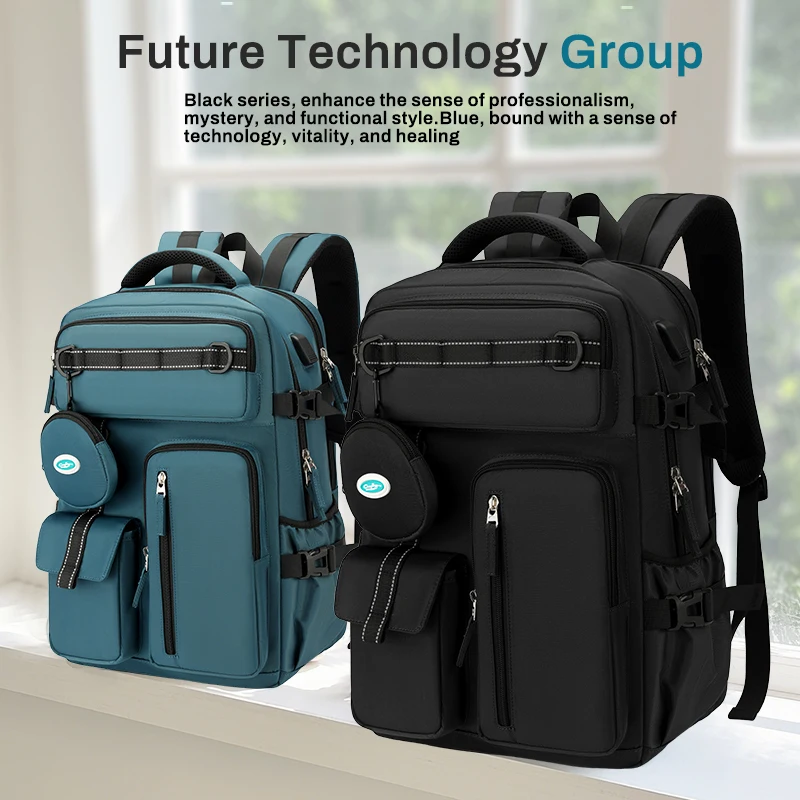
Specific Scenarios
Traditional backpacks shine when:
* Budget constraints make their lower entry price appealing
* Frequent exposure to rough conditions would damage fine leather
* Maximum carrying capacity for bulky items is necessary
* Minimal maintenance requirements fit your lifestyle better
* Weight savings from lightweight materials would improve comfort
For those whose travel needs dictate their bag choice, leather carry-on backpacks for travel offer a middle ground that combines traditional backpack capacity with leather quality.
Making Your Decision: Questions to Consider Before Purchasing
Choosing between a leather briefpack and a traditional backpack ultimately comes down to honest self-assessment about your lifestyle, needs, and preferences. Consider these key questions to guide your decision:
Daily Routine Assessment
- How do you typically commute? (Walking, cycling, driving, public transit)
- What items do you carry daily, and what is their combined weight?
- How long do you physically carry your bag during a typical day?
- Do you need to transition between different environments or settings?
- How important is quick access to specific items throughout your day?
Professional Image Considerations
- What’s the dress code or expected appearance in your workplace?
- Do you regularly meet with clients, executives, or other external contacts?
- How important is projecting a particular image or style in your field?
- Would a more professional bag potentially influence how you’re perceived?
- Do you need one bag that works across casual and formal settings?
Practical Priorities
- What’s your budget for this purchase, considering cost-per-use over time?
- How willing are you to perform regular maintenance on your bag?
- Do you prefer items that develop character as they age?
- How important is weather resistance in your climate?
- Are you looking for a long-term investment or a shorter-term solution?
These questions help identify whether you value the professional aesthetics, versatile carrying options, and aging characteristics of a leather briefpack, or if you prioritize the ergonomic design, lightweight construction, and casual versatility of a traditional backpack.
Understanding the features of executive-style backpacks can provide additional context for evaluating whether these professional features align with your needs.
Designer Men's Backpack, Men's Leather Laptop Backpack, Men's Leather Work Backpack
Price range: $158.04 through $160.04 Select options This product has multiple variants. The options may be chosen on the product page15 Inch Leather Laptop Backpack, Leather Briefcase Backpack
$332.96 Select options This product has multiple variants. The options may be chosen on the product page17 Inch Leather Laptop Backpack, Men's Leather Travel Backpack, Men's Leather Work Backpack
Price range: $106.28 through $143.88 Select options This product has multiple variants. The options may be chosen on the product pageLuxury Leather Backpack, Small Leather Backpack, Women's Leather Backpack
Price range: $137.48 through $138.28 Select options This product has multiple variants. The options may be chosen on the product pageDesigner Women's Backpack, Luxury Leather Backpack
Holographic Geometric Laser Diamond PU Leather Women’s Fashion Backpack with Glow-in-the-Dark Design$112.20 Select options This product has multiple variants. The options may be chosen on the product pageConvertible Leather Backpack, Women's Leather Backpack
$105.12 Select options This product has multiple variants. The options may be chosen on the product page
Alternative Hybrid Options: When You Want the Best of Both Worlds
If neither a traditional leather briefpack nor a standard backpack perfectly matches your needs, several hybrid options bridge the gap between these categories.
Modern bag design continues to evolve with innovative solutions that combine elements from both worlds:
- Leather backpacks with traditional styling offer the comfort and carrying style of a backpack with premium materials and a more refined aesthetic
- Professional backpacks made from high-performance technical fabrics provide business organization in lightweight, weather-resistant packages
- Convertible messenger-backpack hybrids allow multiple carrying options without the formal structure of a briefpack
- Smart backpacks incorporate tech-friendly features like charging ports and RFID protection in designs ranging from casual to formal
These alternatives serve professionals who:
* Want leather quality without the formal briefpack structure
* Need technical performance with professional organization
* Prefer casual styling with business functionality
* Seek maximum versatility across different uses and environments
The growing category of convertible leather backpacks demonstrates how manufacturers are responding to the need for bags that adapt to diverse lifestyle requirements.
Caring for Your Chosen Bag: Maintenance Tips for Longevity
Whichever style you select, proper maintenance significantly extends your bag’s lifespan and preserves its appearance.
Leather Briefpack Care Essentials
- Clean regularly with a soft, slightly damp cloth to remove dust and prevent buildup
- Apply quality leather conditioner every 3-6 months, or more frequently in dry climates
- Address spills or stains immediately using appropriate leather cleaners
- Store in a cool, dry place away from direct sunlight when not in use
- Use a dust bag or pillowcase to protect from dust during extended storage
- Stuff with tissue paper to maintain shape during storage
- Allow wet leather to dry naturally at room temperature, never using direct heat
- Consider professional cleaning and conditioning annually for heavily used bags
Traditional Backpack Maintenance
- Follow manufacturer cleaning instructions—many can be machine washed on gentle cycles
- Use mild detergents without bleach for synthetic materials
- Allow to dry completely before storage to prevent mildew
- Reapply water-resistant treatments as needed (typically annually)
- Keep zippers clean and occasionally apply zipper lubricant for smooth operation
- Repair small tears or loose threads promptly before they expand
- Clean interior periodically to remove crumbs and debris that can damage zippers
Both bag types benefit from mindful daily handling:
* Avoid overstuffing which stresses seams and closures
* Use internal organization rather than allowing heavy items to shift freely
* Keep pens capped and liquids sealed in separate containers
* Handle with clean hands to prevent oil and dirt transfer
For those seeking to maintain a professional appearance throughout their career, understanding how to elevate professional style with sleek leather bags provides additional context for preserving the sophisticated look of quality leather goods.
By carefully assessing your needs, understanding the strengths and limitations of each bag type, and committing to proper maintenance, you’ll find the carrying solution that best supports your lifestyle—whether that’s the professional versatility of a leather briefpack or the practical comfort of a traditional backpack.



